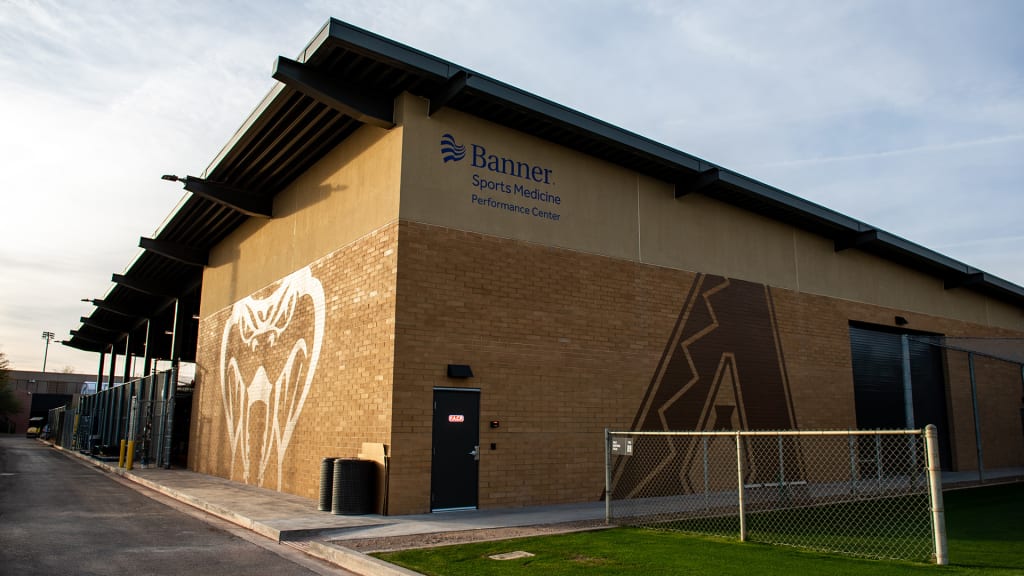
SCOTTSDALE, Ariz. -- There is a new addition at D-backs camp this spring, one that the organization’s baseball operations department has spent a few years developing and one it hopes will pay dividends on the field in the years to come.
No, it’s not top prospect Corbin Carroll, or any player for that matter. It’s a new state-of-the-art hitting and pitching lab.
The D-backs started planning for the lab back in 2019 and, as with a lot of other things, the pandemic slowed the process down. Three years and a significant financial investment that ran into the seven figures later, the lab became fully functional this offseason.
Two of the team’s eight covered batting practice tunnels at its Salt River Fields Spring Training facility were completely enclosed to form the guts of the lab.
D-backs senior vice president of research and development Mike Fitzgerald said the development of this space was largely driven by the efforts of Ken Crenshaw, Jeff Jacobs and Cory Swope of the baseball operations department.
While some of the technology is new, some was already being used, but now it’s all located under one roof and synchronized.
“We're able to fill in more blanks and give a more holistic look,” Fitzgerald said. “We can say, ‘Okay, here's what you did. Here's why we think you might have done that. If we want to create an adjustment to the ball out of the hand, maybe there's an impact of that somewhere else in the process of throwing the pitch that we can focus on -- it's not just the final thing that we measure.”
The lab is essentially split into two lanes -- one to measure hitters and the other to track pitchers. The amount of data that can be generated from a player’s visit to the lab is astounding, and players today, particularly younger ones, already have plenty of experience separating what level of information works best for them.
“It’s pretty cool, because I feel like it's the best way to quantify what it feels like when you're going well,” said left-hander Tommy Henry, who made his big league debut last year. “It's a lot of numbers that we probably can't even put into words, but at the same time, we can't really put the feeling into words either, so it gives us the ability to quantify and have something to refer to, [to] try and get that good feeling more often.”
Force plates in the batter’s box help measure how effectively a hitter transfers his weight from his back leg to his front leg.
“The force plates help us, for instance, when we look at a player and see that he has strength but it might not be translating in the box,” Fitzgerald said. “We know the strength is there, so it creates an opportunity to get them in the lab and see why that’s the case. We can recommend some strategies to see if we can allow them to better take advantage of the strength that they clearly have. It allows them to try different things and get immediate feedback.”
While a lot of the pitching data can be gleaned now during games in Major League parks, the ability to have the same measurements in the lab gives the D-backs the ability to test things outside of a competitive environment.
“Sometimes you'll look at a frame of a pitcher and draw conclusions on what you think their top end velocity could be or what their top end extension could be,” Fitzgerald said. “But the ability to measure a few more things within a pitching delivery and then figure out what cues can alter those things without them being in a Major League game where no one wants to try that with the game on the line, is important.”
Since there is less reliable data in Minor League parks, the lab gives Arizona the ability to press pause on a slumping Minor Leaguer’s season and bring him to Salt River Fields to better diagnose any issues he might be having.
The uses are numerous, and as technology continues to evolve, so will the lab. It’s an addition, much like some of their heralded prospects, that the D-backs are counting on contributing to their success for years to come.
